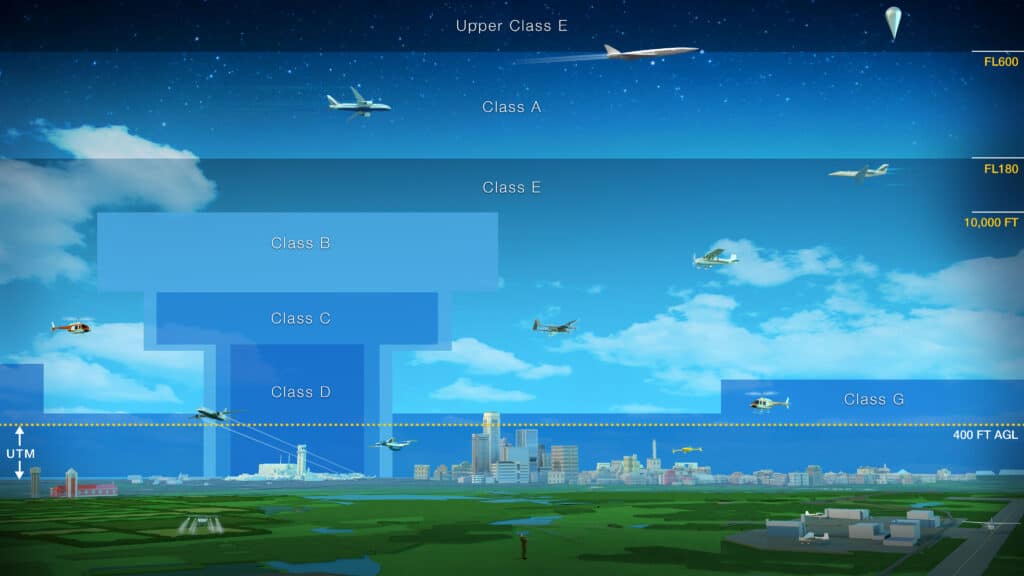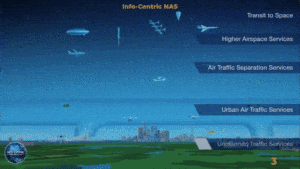Effective communication is crucial in any project or system development, and the Operational Viewpoint (OV-1) diagram can be a valuable tool for enhancing communication and aiding human communication. The OV-1 provides a high-level, graphical depiction of the operational concepts and intentions of a system or project, and can be used to establish a common language and understanding between stakeholders. By using the OV-1, stakeholders can more easily comprehend the purpose, context, and scope of the system, as well as its operational requirements and constraints. This, in turn, can simplify complex business processes and improve collaboration among team members. The OV-1 also offers visual aids to enhance understanding, provides context to stakeholders, highlights benefits and outcomes, and invites feedback. This article will delve into the advantages of using the OV-1 in communication, and provide tips for effectively using it in order to enhance business process and improve human communication. It will also offer examples of how the OV-1 has been successfully applied in real-world situations. By the end of this article, readers will have a deeper understanding of how the OV-1 can improve communication and collaboration in system development and project management, and how it can help organizations achieve their goals and objectives.

Brief overview of the OV-1 diagram
The Operational Viewpoint (OV) is a critical component of Systems Engineering and Enterprise Architecture development, used to provide a comprehensive understanding of a system’s operational concepts and intentions. The Operational Concept, a key component of the OV, describes the main operational concepts of a system, such as intended usage, critical sequence, and operational activities. The OV-1 diagram provides a graphical depiction of the high-level operational concept, including the system’s purpose, context, and scope, as well as its relationships with external systems and organizational relationships chart. It identifies the system components and resources required for its operation, including system resources, business processes, and organizational relationships.
The OV-1 is part of the Defense Architecture Framework (DoDAF) viewpoints, providing detailed descriptions of the architecture and external systems involved in system development and operation. The OV-1 also aids human communication by providing a visual and textual description of the system’s operational concept and activity, and is used to aid industry engagement and process improvements.
By focusing detailed discussions on the OV-1 diagram and its interesting or unique aspects, high level decision makers and architects can analyze the system’s operational situation and information flow, ensuring well-coordinated and efficient system design. The OV-1 identifies the system’s main operational concepts, aiding stakeholders in identifying potential challenges, risks, and opportunities related to system development and management. The OV-1 also aids in the identification of information systems, individual components, and the information flow that enables system operations.
Overall, the OV-1 is an important tool for Operations and Architecture development, improving communication and collaboration among stakeholders, and aiding in the identification of system resources and dependencies. The OV-1 helps to provide a detailed description of system processes and activities, and a pictorial representation of the high level operational concept. By utilizing the OV-1, detailed discussions can be focused on the subject architecture, and a textual description of the operational concept graphic can be used to aid industry engagement and process improvements. The OV-1 provides a level operational concept graphic, aiding stakeholders in the identification of interesting or unique aspects of the system, and the identification of operational activities and situations. Published architectures and aggregate illustrations can be used to further aid in the identification of current systems, their architecture, and external systems, aiding in analysis and operations involved.
The Features of OV-1
System Context
The OV-1 describes the system’s purpose, context, and scope. It provides an overview of the system’s relationships with external systems, organizations, and events, as well as any environmental factors that may impact the system.
The system context provided by the OV-1 is a key feature that can help stakeholders understand the broader picture and implications of the system. It can provide insights into the system’s alignment with the organization’s mission and goals, as well as its dependencies and interactions with other systems and organizations. The OV-1’s system context can also help stakeholders identify potential challenges, risks, and opportunities that may impact the system, allowing for more informed decision-making and planning. By providing a holistic view of the system’s purpose, context, and scope, the OV-1 can facilitate effective communication and collaboration among stakeholders and contribute to the successful development and implementation of the system.
Operational Concepts
The OV-1 describes the system’s operational concepts and intentions, including the system’s mission, goals, objectives, and activities. It helps to establish a common language and understanding of the system’s operational requirements and constraints.
The operational concepts described in the OV-1 are critical to understanding the system’s purpose and requirements. By identifying the system’s mission, goals, objectives, and activities, the OV-1 helps to establish a common language and understanding among stakeholders, and provides a framework for the development and management of the system. This can help to ensure that all stakeholders are aligned with the system’s purpose and requirements, and can contribute effectively to its development and management. Additionally, by identifying the system’s operational requirements and constraints, the OV-1 can inform planning and decision-making related to resource allocation, risk management, and acquisition decisions. By providing a clear understanding of the system’s operational concepts and intentions, the OV-1 can contribute to the successful development and implementation of the system.
Operational Scenarios
The OV-1 may include operational scenarios that describe how the system will be used in different situations. This helps to illustrate the system’s capabilities and limitations, and to identify potential risks and opportunities.
Operational scenarios are a critical component of the OV-1 diagram as they help stakeholders to understand how the system will operate in different situations. By describing how the system will be used in different scenarios, the OV-1 helps to illustrate the system’s capabilities and limitations, and to identify potential risks and opportunities. This can help stakeholders to identify potential challenges or gaps in the system’s design or implementation, and to make more informed decisions related to system development and management. Additionally, operational scenarios can be used to test the system’s functionality and effectiveness in various situations, and to identify potential areas for improvement or innovation. By including operational scenarios in the OV-1, stakeholders can gain a deeper understanding of the system’s requirements and capabilities, and can work more effectively to develop and manage the system.
Resource Requirements
The OV-1 identifies the resources required to support the system’s operations, including personnel, equipment, facilities, and funding. This helps to inform planning and decision-making related to resource allocation and acquisition.
Identifying the resources required to support the system’s operations is a critical part of developing and managing a successful system, and the OV-1 diagram can play an important role in this process. By identifying the resources required, such as personnel, equipment, facilities, and funding, the OV-1 can inform planning and decision-making related to resource allocation and acquisition. This can help stakeholders to identify potential resource constraints or challenges, and to make more informed decisions related to budgeting and procurement. Additionally, by identifying the resources required to support the system’s operations, the OV-1 can help stakeholders to ensure that the system’s development and implementation is well-coordinated and efficient. By including resource requirements in the OV-1, stakeholders can gain a more complete understanding of the system’s needs and requirements, and can work more effectively to develop and manage the system.
Relationships and Dependencies
The OV-1 describes the relationships and dependencies between system components, including interfaces, data flows, and communication protocols. This helps to identify potential integration challenges and to ensure that the system’s architecture is well-coordinated and efficient.
The relationships and dependencies described in the OV-1 are a critical component of the system’s design and implementation. By identifying the interfaces, data flows, and communication protocols between system components, the OV-1 can help stakeholders to understand how the system operates and how different components are connected. This can help to identify potential integration challenges or conflicts, and to ensure that the system’s architecture is well-coordinated and efficient. Additionally, by understanding the relationships and dependencies between system components, stakeholders can more effectively plan for system maintenance and upgrades, and can ensure that changes to one component do not adversely affect other components. By including relationships and dependencies in the OV-1, stakeholders can gain a more complete understanding of the system’s architecture and design, and can work more effectively to develop and manage the system.
The Benefits of Using OV-1
Enhances Communication
Improving communication and collaboration among stakeholders is a critical aspect of any enterprise architecture development and management project. The Operational Viewpoint (OV) and its key component, the Operational Concept, can aid human communication by providing a pictorial and textual description of the system’s operational concepts and intentions. The OV-1 diagram, which provides a graphical depiction of the system’s high-level operational concept, can be a useful tool for improving communication and understanding among stakeholders. The OV-1 helps to establish a common language and understanding of the system’s purpose and scope, which can help stakeholders to work together more effectively to design and implement systems that meet the needs of the organization. By focusing detailed discussions on the main operational concepts and their interesting or unique aspects, stakeholders can use the OV-1 to aid industry engagement and process improvements, and to ensure that the system design is well-coordinated and efficient. Overall, the OV-1 and its related architectural data, such as the Logical Data Model and Organizational Relationships Chart, can help stakeholders to improve communication and collaboration throughout the system development and architecture development process.
Establish a Common Language
The OV-1 helps to establish a common language and understanding of the system’s operational concepts and intentions. This helps to ensure that all stakeholders, including program managers, system designers, and operational personnel, are on the same page regarding the system’s purpose and scope. By establishing a common language, the OV-1 can improve communication and collaboration among stakeholders and prevent misunderstandings or miscommunications.
Improves Planning and Decision Making
The OV-1 helps to identify the operational requirements and constraints of the system, which can inform planning and decision-making related to resource allocation, risk management, and acquisition decisions. By providing a clear understanding of the system’s purpose and scope, the OV-1 can help stakeholders to make more informed decisions about how to design and implement the system in a way that meets the needs of the organization.
Facilitates Compliance
The OV-1 helps to ensure that the system’s architecture is well-coordinated and efficient, and that it meets any relevant regulatory or compliance requirements. By providing a visual representation of the system’s operational concepts and intentions, the OV-1 can help stakeholders to identify potential compliance issues and ensure that the system is designed and implemented in a way that meets all applicable requirements.
Identify Requirements and Constraints
The OV-1 helps to identify the operational requirements and constraints of the system, which can inform planning and decision-making related to resource allocation, risk management, and acquisition decisions. By identifying requirements and constraints early on, the OV-1 can help to ensure that the system is designed and implemented in a way that meets the needs of the organization and its stakeholders.
Facilitates Trade-off Analysis
The OV-1 helps to identify potential trade-offs between system capabilities, costs, and risks. This can facilitate analysis and decision-making related to system design and optimization. By understanding the trade-offs between different system capabilities and features, stakeholders can make informed decisions about how to design and implement the system in a way that meets the needs of the organization.
Supports System Integration
The OV-1 helps to identify the relationships and dependencies between system components, including interfaces, data flows, and communication protocols. This can help to ensure that the system’s architecture is well-coordinated and efficient, and can facilitate integration with external systems and organizations. By identifying the relationships and dependencies between system components early on, the OV-1 can help to prevent integration challenges down the road.
Supports Continuous Improvement
The OV-1 helps to identify areas for improvement and innovation, which can be incorporated into the system’s architecture. This helps to ensure that the system remains relevant, efficient, and effective over time. By continually identifying areas for improvement, the OV-1 can help to support a culture of continuous improvement within the organization.
Overall, the OV-1 can be a valuable tool for developing and managing enterprise architectures, as it helps to improve communication, alignment, planning, and decision-making. By using the OV-1 to establish a common language, identify requirements and constraints, facilitate trade-off analysis, support system integration, and support continuous improvement, stakeholders can work together more effectively to design and implement systems that meet the needs of the organization.
How to Use in Communication
Keep it simple
The OV-1 should be easy to understand and digest for stakeholders who may not be familiar with technical jargon or complex systems. Use plain language and avoid unnecessary detail.
When creating an OV-1, it’s essential to keep things simple and easy to understand for all stakeholders. The purpose of the OV-1 is to communicate the operational concepts and intentions of a system in a clear and concise manner. Therefore, it’s important to use plain language and avoid unnecessary details and technical jargon. This approach can help ensure that all stakeholders, regardless of their technical background, can easily digest and comprehend the information presented in the OV-1.
One way to simplify the OV-1 is to focus on the most critical information related to the system’s operational concepts and intentions. For example, if the system is designed to improve efficiency in a particular process, the OV-1 should highlight the key concepts and intentions that support this objective. Unnecessary details or technical specifications that don’t directly relate to the system’s purpose or intended outcomes should be avoided.
In addition, the use of clear and concise language can help simplify the OV-1. Avoiding overly complex terminology or acronyms that may be unfamiliar to stakeholders can help ensure that the information presented is easily understood. Using analogies or comparisons to relate technical concepts to real-world scenarios can also be helpful in simplifying the information presented in the OV-1.
Overall, keeping the OV-1 simple and easy to understand is essential for effectively communicating the operational concepts and intentions of a system to stakeholders. By using plain language, focusing on critical information, and avoiding unnecessary details and technical jargon, the OV-1 can be an effective tool for ensuring that all stakeholders understand the purpose and objectives of the system.
Use visuals
The OV-1 is a graphical representation of the system’s operational concepts and intentions, so use visuals to help communicate the key concepts and relationships. Use colors, shapes, and diagrams to make the information more engaging and memorable.
Visuals are a powerful tool when it comes to communicating complex information, and the OV-1 is no exception. Since the OV-1 is a graphical representation of a system’s operational concepts and intentions, it’s essential to use visuals to help communicate the key concepts and relationships. This can be achieved by using colors, shapes, and diagrams that make the information more engaging and memorable for stakeholders.
One of the benefits of using visuals in the OV-1 is that it can help stakeholders quickly and easily understand the system’s purpose and objectives. For example, using diagrams to illustrate how different components of the system relate to each other can help stakeholders visualize the system’s structure and operation. Additionally, the use of color coding can help highlight critical information and make it stand out.
Another benefit of using visuals in the OV-1 is that it can help stakeholders remember the information presented. Research has shown that people are more likely to remember information when it’s presented visually. By incorporating images and diagrams into the OV-1, stakeholders are more likely to remember the key concepts and relationships between system components.
Overall, using visuals in the OV-1 is an effective way to communicate the system’s operational concepts and intentions. By using colors, shapes, and diagrams to make the information more engaging and memorable, stakeholders are more likely to understand and remember the information presented in the OV-1.
Provide context
The OV-1 should provide a clear understanding of the system’s purpose, context, and scope. Be sure to explain the system’s relationship to the organization’s overall mission, as well as any external systems or events that may impact it.
When creating an OV-1, it’s crucial to provide context around the system’s purpose, context, and scope. The OV-1 should explain how the system fits into the organization’s overall mission and objectives. Additionally, any external systems or events that may impact the system should be identified and explained.
Providing context is important because it helps stakeholders understand why the system is needed and how it will benefit the organization. By explaining the system’s purpose and objectives, stakeholders can better understand how the system will help achieve the organization’s goals. Additionally, by identifying any external factors that may impact the system, stakeholders can better understand the potential risks and opportunities associated with the system’s implementation.
To provide context in the OV-1, it’s important to clearly explain the system’s relationship to the organization’s overall mission and objectives. This may involve providing background information on the organization’s goals and how the system will support those goals. Additionally, any external factors that may impact the system should be identified and explained. For example, if the system is designed to work with other systems or organizations, these relationships should be clearly explained.
Overall, providing context in the OV-1 is essential for ensuring that stakeholders understand the system’s purpose and objectives. By explaining the system’s relationship to the organization’s overall mission and identifying any external factors that may impact the system, stakeholders can better understand the system’s potential impact on the organization.
Highlight benefits
Focus on the benefits and outcomes of the system, rather than just the technical details. Help stakeholders understand how the system will improve efficiency, save costs, or enhance mission success.
When creating an OV-1, it’s important to focus on the benefits and outcomes of the system, rather than just the technical details. Stakeholders are more likely to be engaged and supportive of the system if they understand how it will improve efficiency, save costs, or enhance mission success.
One way to highlight the benefits of the system is to provide concrete examples of how the system will improve operations. For example, if the system is designed to automate certain processes, explain how this will save time and reduce errors. If the system will improve communication between different departments or organizations, explain how this will lead to better collaboration and more effective decision-making.
It’s also important to communicate how the system’s benefits align with the organization’s overall goals and objectives. For example, if the organization’s mission is to provide high-quality services to customers, explain how the system will help achieve this goal. Similarly, if the organization is focused on reducing costs, explain how the system will save money over time.
By highlighting the benefits and outcomes of the system, stakeholders will be more likely to see the value in the system and support its implementation. Additionally, by tying the system’s benefits to the organization’s overall goals and objectives, stakeholders will be more likely to understand how the system fits into the bigger picture and how it will help the organization achieve its mission.
Invite feedback
Finally, use the OV-1 as an opportunity to engage stakeholders and invite feedback. Ask questions, solicit opinions, and encourage participation to ensure that the system’s operational concepts align with the needs and priorities of the organization.
Using the OV-1 as an opportunity to engage stakeholders and invite feedback is crucial for ensuring that the system’s operational concepts align with the needs and priorities of the organization. By asking questions, soliciting opinions, and encouraging participation, stakeholders can provide valuable insights and feedback that can help improve the system’s design and implementation.
One way to invite feedback is to present the OV-1 to stakeholders and encourage them to ask questions and provide feedback. This may involve holding meetings or workshops where stakeholders can review the OV-1 and provide feedback in a collaborative environment. It’s important to actively listen to feedback and take it into consideration when making decisions about the system’s design and implementation.
Another way to invite feedback is to distribute the OV-1 to stakeholders and provide a way for them to submit feedback or ask questions. This may involve setting up an online feedback form or providing contact information for stakeholders to submit feedback directly. It’s important to be responsive to feedback and provide timely responses to questions and concerns.
By inviting feedback, stakeholders can provide valuable insights and help ensure that the system’s operational concepts align with the needs and priorities of the organization. Additionally, by creating an open and collaborative environment for feedback, stakeholders are more likely to feel engaged and invested in the system’s success.
Summary of the benefits of using the OV-1
The OV-1 provides a range of benefits for system designers and stakeholders. It helps to establish a common language and understanding of the system’s operational requirements and constraints. It provides a clear understanding of the system’s purpose, context, and scope, as well as any external systems or events that may impact it. The OV-1 identifies the resources required to support the system’s operations, including personnel, equipment, facilities, and funding. It also describes the relationships and dependencies between system components, helping to identify potential integration challenges and ensuring that the system’s architecture is well-coordinated and efficient.
Using the OV-1 also helps to keep the system design and development process focused and organized. It helps to ensure that all stakeholders are aligned around the same vision and goals, and that decisions are informed by a shared understanding of the system’s requirements and constraints. By keeping the system design simple and using visuals to communicate key concepts and relationships, the OV-1 can also aid in stakeholder communication and engagement.
Overall, the OV-1 is a powerful tool for designing, developing, and communicating complex systems. It provides a clear and concise overview of the system’s operational concepts and intentions, while also facilitating collaboration and engagement among stakeholders.






